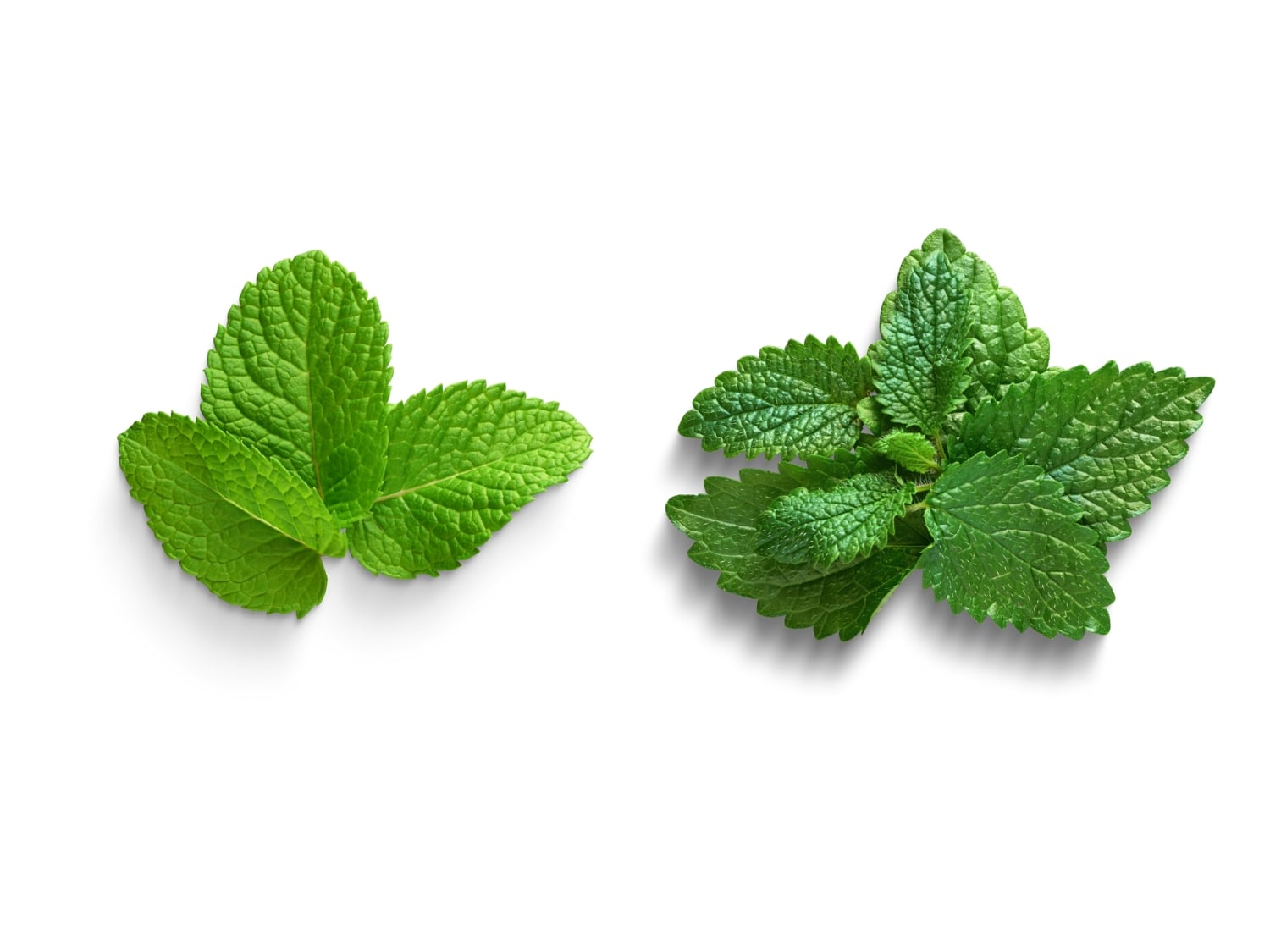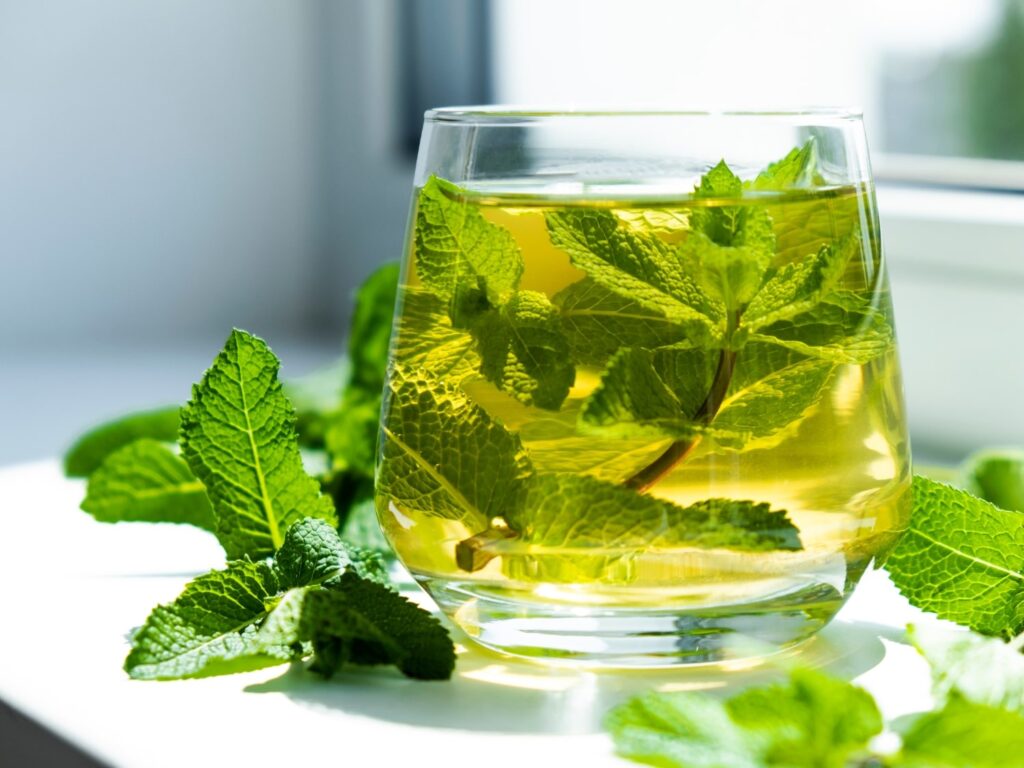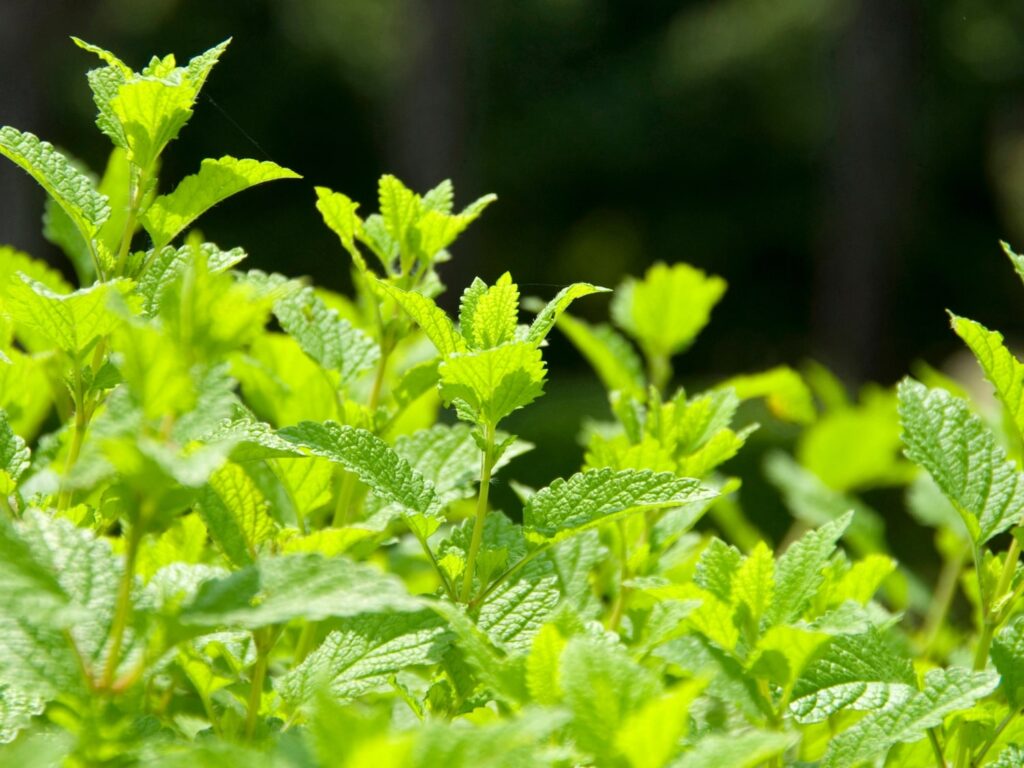
Botanical Overview
Mint and lemon balm are both members of the Lamiaceae family, but they belong to different genera. Mint refers to a group of species within the Mentha genus, such as spearmint (Mentha spicata) and peppermint (Mentha × piperita). These are fast-growing perennial herbs characterized by square stems, serrated leaves, and a distinct cooling aroma mainly from menthol.
Lemon balm, scientifically known as Melissa officinalis, is a perennial herb native to the Mediterranean. It has heart-shaped, slightly fuzzy leaves and small pale flowers, emitting a gentle lemon-mint scent due to its essential oils like citronellal and geraniol. Though related, these plants differ significantly in appearance and aroma.
Flavor and Aroma of Lemon Balm and Mint Leaves
Mint offers a fresh, cooling, and sharp flavor with a characteristic menthol scent. Spearmint provides a sweeter, milder taste, while peppermint has a stronger, more pungent profile.
Lemon balm, on the other hand, carries a delicate citrus aroma with subtle mint undertones. Its flavor is softer and more lemony, making it less sharp and more gentle on the palate compared to mint. This difference in flavor and scent influences how each herb is used in culinary and therapeutic contexts.
Culinary Uses of Mint Leaves vs Lemon Balm
Mint is an incredibly versatile herb in the kitchen. It is commonly used in a variety of dishes and beverages, including teas like Moroccan mint tea, garnishing desserts and salads, and flavoring sauces such as mint chutney or yogurt sauce. Mint is also a popular ingredient in cocktails like mojitos and mint juleps and complements savory dishes, particularly lamb and many Middle Eastern recipes.
Lemon balm’s use in cooking is typically subtler due to its delicate flavor. It is frequently added to herbal teas and infusions, fruit salads, desserts, light sauces, and dressings. Lemon balm is also used to infuse oils and vinegars and sometimes in jams and jellies. Because of its mildness, it’s often added at the end of cooking or steeping to preserve its aroma.
Traditional and Medicinal Uses

Mint has a long-standing reputation as a digestive aid. Traditionally, it has been used to relieve indigestion, gas, nausea, headaches, and respiratory problems. Mint is also valued for freshening breath and maintaining oral hygiene. Topically, peppermint oil provides a cooling effect useful for soothing muscle pain. In modern herbal medicine, peppermint oil continues to be used for conditions like irritable bowel syndrome (IBS) and as a mild pain reliever.
Lemon balm is celebrated for its calming and antiviral properties. It has traditionally been employed to reduce anxiety, stress, and insomnia, improve mood and cognitive function, and treat cold sores caused by the herpes simplex virus. It also aids digestion and relieves bloating. Scientific studies support lemon balm’s mild sedative effects and its potential antiviral benefits, making it popular in natural remedies for nervous system support.
Nutritional and Phytochemical Composition of Mint Leaves and Lemon Balm
Both mint and lemon balm are rich in antioxidants and beneficial plant compounds, but their phytochemical profiles differ. Mint contains menthol, menthone, flavonoids, and rosmarinic acid, which contribute to its antioxidant and anti-inflammatory effects.
Lemon balm is particularly high in flavonoids, phenolic acids like rosmarinic acid, and essential oils such as citronellal and geranial. These compounds provide lemon balm with its calming, neuroprotective, and antiviral properties. While both herbs support health through antioxidants, lemon balm’s unique composition gives it a stronger association with calming and cognitive benefits.
Growing and Cultivation of Mint Leaves vs Lemon Balm

Mint is known for its vigorous growth and adaptability. It thrives in many climates and soil types but can become invasive if not properly controlled, spreading rapidly through underground runners. Mint prefers partial shade and moist soil. Lemon balm also grows easily but is less aggressive than mint. It prefers full sun to partial shade and well-drained soil. Lemon balm spreads moderately via rhizomes but is easier to contain, making it a popular choice for herb gardens and containers. Both herbs can be harvested multiple times during the growing season.
Side Effects and Precautions for Lemon Balm and Mint Leaves
Both mint and lemon balm are generally safe when used in culinary amounts or moderate medicinal doses. Mint can cause heartburn or allergic reactions in sensitive individuals. Peppermint oil, especially in concentrated forms, should be used cautiously by children, pregnant women, or people with gastroesophageal reflux. Lemon balm is considered safe for most people, but rare allergic reactions may occur. It can interact with sedatives or thyroid medications, so individuals taking such drugs should consult healthcare providers before use.
Lemon Balm and Mint Leaves Summary of Differences
| Aspect | Mint | Lemon Balm |
|---|---|---|
| Botanical genus | Mentha spp. | Melissa officinalis |
| Flavor | Cool, sharp menthol | Mild lemony, gentle mint |
| Aroma | Strong, refreshing | Soft citrus-mint |
| Culinary use | Wide variety, savory and sweet | Mainly teas, desserts, mild dishes |
| Medicinal benefits | Digestive aid, analgesic | Calming, antiviral, cognitive support |
| Growth habit | Aggressive spreader | Moderate spreader |
| Common active compounds | Menthol, menthone, flavonoids | Rosmarinic acid, citronellal |
In summary, mint and lemon balm differ in several key aspects. Mint, from the Mentha genus, offers a strong, cooling menthol flavor and aroma and is widely used in both sweet and savory dishes. Lemon balm, Melissa officinalis, has a softer, lemony flavor with mild mint undertones, often used for teas and delicate recipes.
Medicinally, mint is a digestive aid and mild analgesic, while lemon balm is known for its calming, antiviral, and cognitive benefits. Mint tends to grow aggressively, while lemon balm grows moderately. Their chemical compositions reflect these differences, with mint high in menthol and lemon balm rich in calming phenolic compounds.
Which One Should You Choose Between Mint Leaves or Lemon Balm?
If your goal is culinary versatility with a refreshing punch, mint is an excellent choice for drinks, salads, sauces, and savory meals. If you prefer a gentle citrus note in teas, desserts, or light dishes, lemon balm is preferable. For health benefits, mint is ideal for digestive and respiratory support, whereas lemon balm is better for relaxation, anxiety relief, and antiviral support. From a gardening perspective, mint requires containment due to its vigorous growth, while lemon balm is easier to manage and can provide a milder aromatic presence in your herb garden.
Conclusion
Although mint and lemon balm are closely related herbs with some overlapping uses, they each bring distinct flavors, aromas, and health benefits. Incorporating both into your kitchen and wellness routine can enrich your culinary creations and provide natural support for digestion, relaxation, and more. Whether you seek the sharp coolness of mint or the soothing citrus hint of lemon balm, these herbs are valuable additions to any herb collection.
